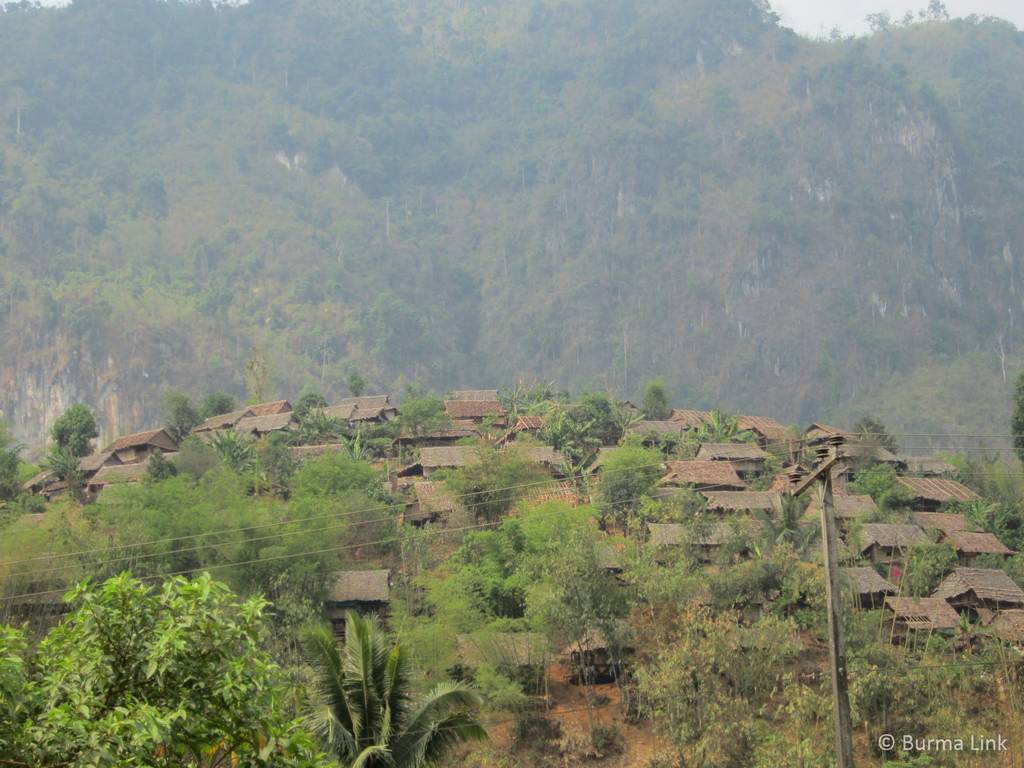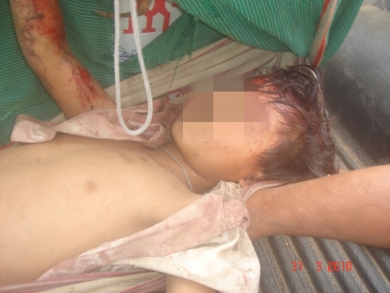“Our main need is security. We want the Burmese soldiers out of our area, and take the landmines they planted out too. When we return, we don’t want the Burmese soldiers harassing us again.” (Karen man, CIDKP focus group, Palaw Township, interviewed in June 2008; TBC, 2008, p. 14)
Talks about repatriation coupled with reduced aid have caused anxiety among the camp communities as most refugees do not feel safe returning to their homeland. Thailand has issued repeated threats to send refugees back to Burma (see e.g. Saw Yan Naing, September, 2012) and to close down the camps (Chitradon, April 2011; Saw Yan Naing, July, 2014b). This is a significant concern as formidable obstacles for safe repatriation, including the ongoing human rights violations in ethnic border areas as well as widespread landmine contamination, still remain, and genuine and lasting peace is yet nowhere in sight.
It is also worrying that both Thai authorities and the UNHCR have forcibly returned refugees back to Burma in the past despite grave ongoing human rights violations. In 1995, UNHCR “voluntarily” repatriated over 200,000 Burmese refugees from Bangladesh, most of them Rohingya. In 1996, at least 10,000 refugees attempted a desperate return to Bangladesh where the UNHCR was now denied any operational role. At least 15 women and young children drowned to death. As pointed out by the Human Rights Watch (1996); “The 1996 exodus from Burma raises several important questions about the UNHCR’s repatriation operation from Bangladesh and about the promotion of “voluntary” return to countries with particularly abusive governments.” The UNHCR also acknowledged the issue:
“…in some instances UNHCR has placed too much emphasis on early return to countries of origin which has resulted in return movements to less than favourable conditions.” (UNHCR, Oslo Declaration and Plan of Action, June 1994, as cited in Human Rights Watch, 1996).
According to the Arakanese National Rohingya Organization (ARNO), many more refugees also lost their lives over the years whilst resisting forced repatriation from Bangladesh to Burma (ARNO, 2012).
In 1996, Thailand forced Mon refugees near Sangkhlaburi to go back to Burma following a ceasefire signed between the New Mon State party (NMSP) and the Burmese government. After been forcibly repatriated, these Mon refugees remained far from their original homeland, received inadequate aid, and were unable to support themselves, according to the TBC (2004). The ceasefire did not lead to political dialogue, as none of them have, and subsequently broke in 2010. A new ceasefire was signed again 2012, but similarly to all the numerous ceasefires signed between the government and ethnic armies since the 1990s, the government has made no indication of actually discussing the possibility of establishing a federal union. As long as the government refuses to discuss the political goals of the ethnic organisations, all ceasefires are bound to be broken.
Thousands are now holding their breath praying that the past mistakes by the UNHCR and the Thai government will not be repeated in the Karen and Karenni camps on the Thailand-Burma border. Despite the positive change that has emerged under the Thein Sein administration, much more needs to be done before lasting peace and security can become a reality. Repatriation should arguably be a refugee-led voluntary operation and not enforced by outside actors.
“I don’t think you really need to return refugees back because if conditions were right, the refugees would go back of their own free will”. (Aung San Suu Kyi on June 2, 2012; Burma Partnership short documentary highlighting refugees’ voices about repatriation from camps along the Thailand border back into Burma: “Nothing About Us Without Us“)
Furthermore, there are also significant concerns that refugees and local CBOs have been left out of the repatriation planning. The key to successful return will not only be that it is voluntary but also that community participation is guaranteed in all stages of the preparedness and planning process.
“The refugees and internally displaced people are part of the solution, not the problem, and we all pray that before long they will be able to go back to Burma/Myanmar and play an important role in helping build a modern and peaceful nation.” (Jack Dunford, Executive Director of TBC 1984-2012; TBC, 2013)
On their website, the UNHCR (2013b) listed as one of their targets and objectives for 2013 in Thailand that, “All persons of concern in the nine camps have access to information on conditions in potential return areas in Myanmar (Burma) and on basic protection standards regarding voluntary repatriation.” At the same time, there seemed to be no public information on where the refugees would go and refugees themselves seemed utterly unaware of anything related to the repatriation planning (based on Burma Link’s interviews with refugees in September 2012, March 2013, November 2013, December 2014, and January 2015). The situation seems largely the same today, and by January 2015, the UNHCR had removed this target from their website (UNHCR, 2015).
In March 2013, the KRC issued a statement outlining ten points to repatriation, including a nationwide ceasefire, settling of political conflicts, and respect for universal human rights (Karen News, March, 2013). The KRC said again in May 2013 that it wants refugees to return only after the building of a genuine peace between the government and the KNU, and that when it is time to implement repatriation, all refugees should be returned at the same time and not as part of a “repatriation pilot” as suggested by the Burmese government (Saw Khar Su Nyar, May, 2013).
In May and June 2013, refugees’ fears of premature repatriation were fuelled following a UN-led profiling survey. Burma Link came across significant unheard refugee concerns as more than 3,600 refugees in Mae La camp had signed a petition refusing to participate in the survey, claiming the questionnaire solicited answers that favour repatriation (Sullivan, June, 2013). The refugees feared that the information could be used as an indication of “voluntary return” and demanded that the survey be re-authored with their participation and approval. The petition was delivered to the UNHCR and an article about the issue was published on the Democratic Voice of Burma (see Sullivan, June, 2013). Although the survey never got refugees’ approval, it saw some important changes; refugees now needed to rank a preference of minimum two options for their future, instead of three (which meant they no longer had to indicate that going back to Burma is one of the choices they voluntarily choose for their future – read also Burma Link’s interview with the refugee who led the petition). The profiling survey has now been conducted in all camps along the border.
Refugees still remained sceptical about the underlying motives of the survey and the fact that it was conducted with tablets. One young refugee woman, Christine, told Burma Link in May 2014 that “even though we say the real answer, they
After the Thai military took over power in a coup in May, 2014, refugees’ concerns and fears have grown even more. The junta has significantly restricted refugees’ movement, announced that all refugees will be repatriated in 2015, and conducted a head count in the camps (see e.g. Saw Yan Naing, July, 2014a, 2014b). Thai authorities have given very little details of their repatriation plans or the underlying reasons for the head count. The UNHCR has also recently started their own headcount in the camps, which most refugees think will give them a chance to register as refugees and be resettled. Although the UNHCR has announced that the headcount is not be an official registration, the refugees have little faith in the organisation telling them the truth; most think this is their last chance to get out and start a new life.
“We don’t know when they will close the camp, or when they close the camp, where we should go. We don’t know… if authorities arrange forced repatriation, refugees will refuse to go back and it can build tension between refugees and authorities.” (Christine, 22, Karen refugee, spoke with Burma Link in Mae La refugee camp in May 2014; see ‘Authorities Should Take Action for Refugees NOW’)
Currently none of the original reasons why refugees fled have been sustainably resolved, and it is imperative that the refugees are not forced, directly or indirectly, to go back to the country that they so desperately escaped from.

Thousands of the 120,000 refugees in the camps are deeply concerned over reduced aid and the ongoing talks of repatriation. (Photo: Burma Link)
Updated February 19, 2015
Continue to Thailand-Burma Border
